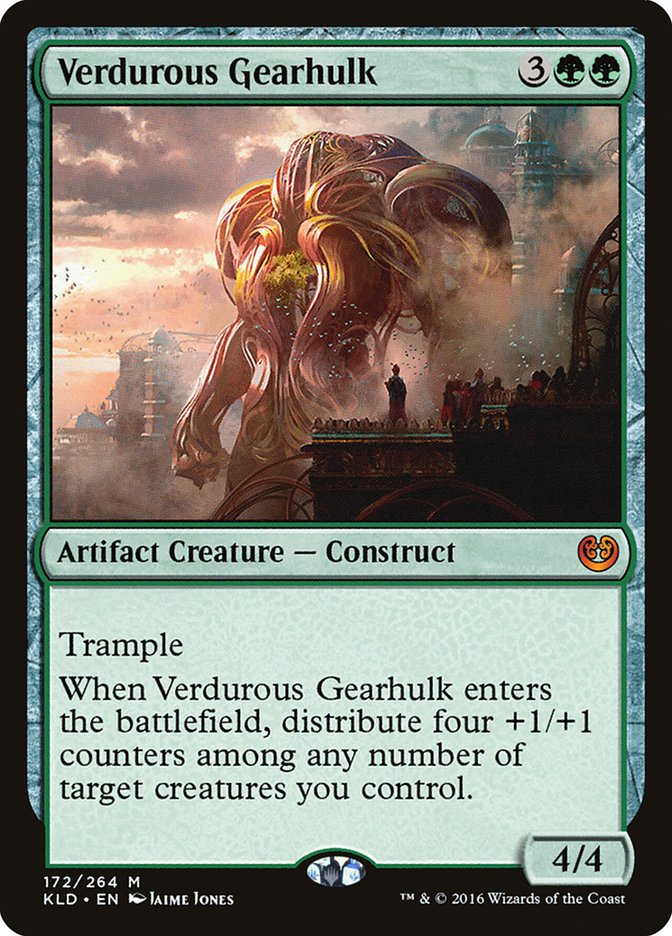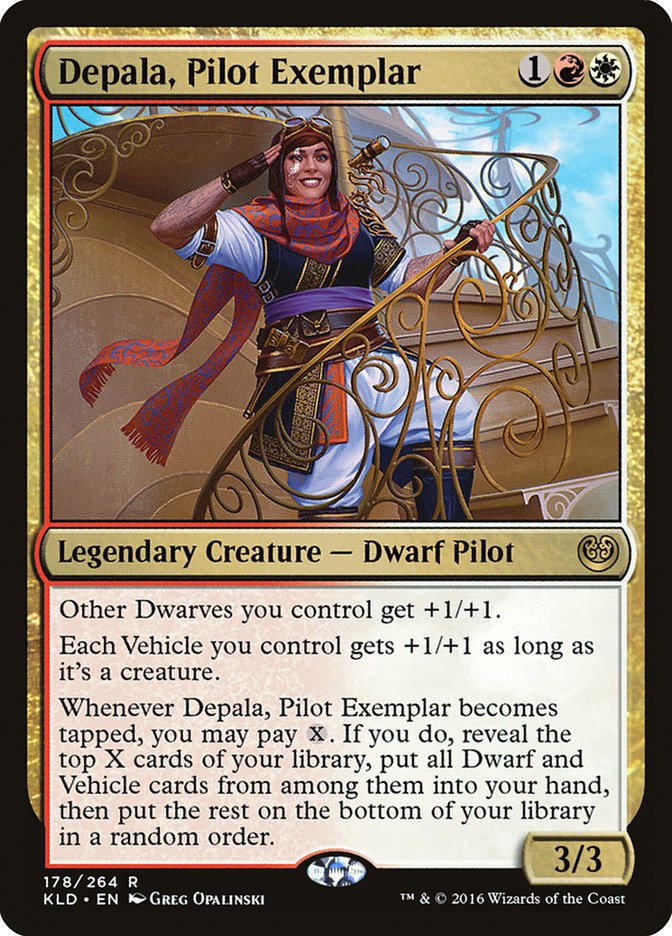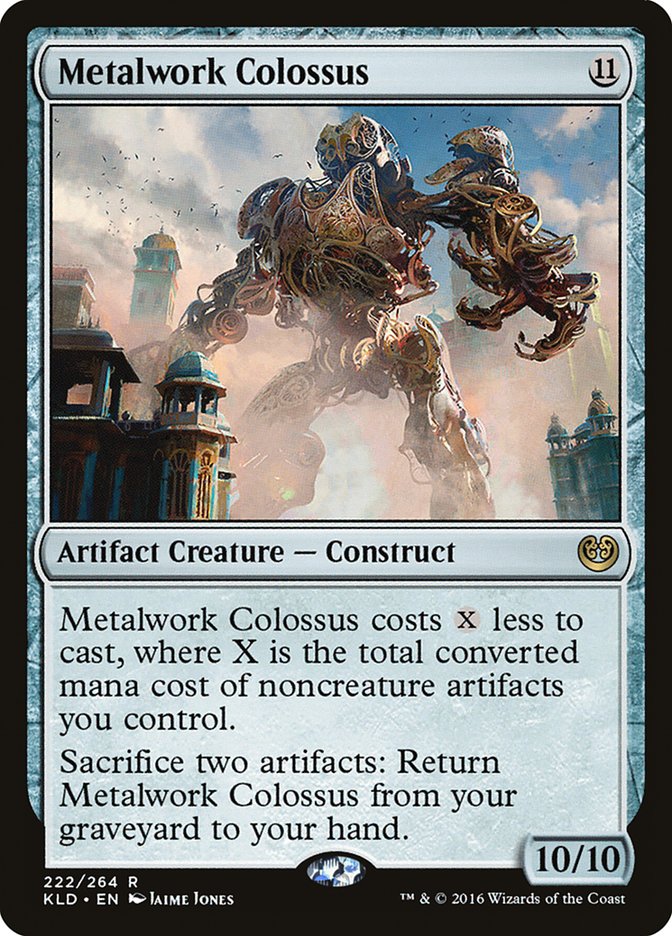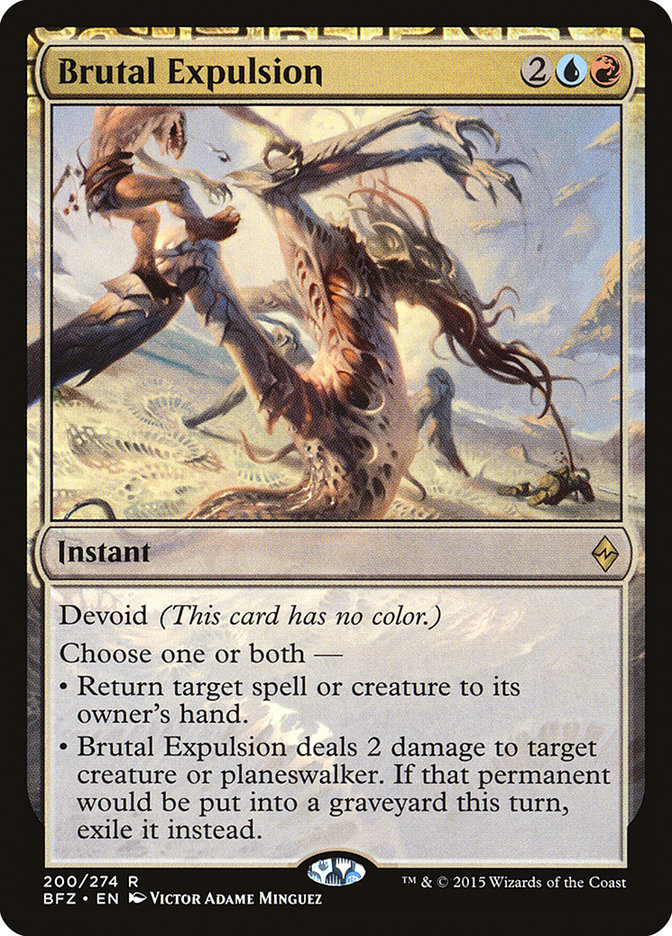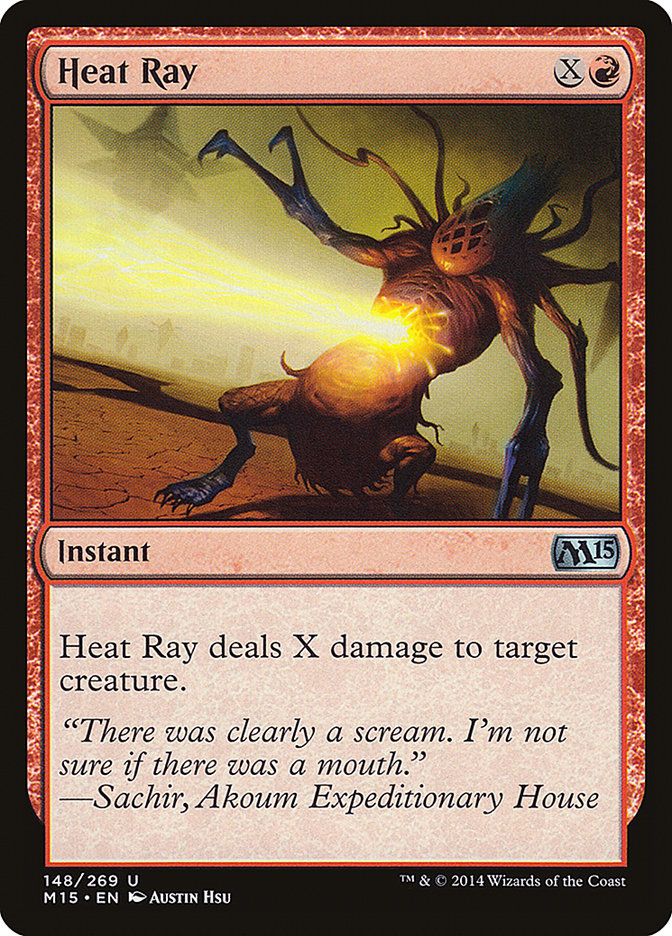Pro Tour Kaladesh was my second-worst Pro Tour finish of all time. I won two matches altogether and for the first time in over three years I was watching from the sidelines come Saturday. I could blame countless things, or justify endless reasons, but the fact of the matter is I did badly and want to know why. What could I have done to mitigate such a disastrous event? Today we analyze every angle in pursuit for the truth to why I sucked it up big time in Honolulu.
Many of you may already be aware of this, but Pro Tour Kaladesh was a very bizarre tournament to participate in. Round 4 is always exciting, win or lose, since you get to scurry around the hall seeing what everyone else decided to play. Maybe young Brad was more interested in scoping out the competition in the past, but this aged and withered version of me mostly just enjoys finding out why people choose the decks they did. Sometimes it’s because they discovered more than my squad, and other times they missed things, but it’s just so much fun to discover why people show up with different decks than I did.
The usual excitement walking around the room was replaced with bewilderment as I couldn’t comprehend what people were doing. It was all over the place!
First I saw someone on Team F2F playing the same deck they played last Pro Tour, G/B Delirium, a deck my squad wrote off as unplayable unless you accompanied the strategy with Verdurous Gearhulk and Smuggler’s Copter.
Down the line I saw one of the best in the game, Owen Turtenwald, rolling dice with Aetherworks Marvel. Sitting close to him was one of his teammates, from what I could tell playing a list of W/R Vehicles as close to Chris VanMeter’s list as one could get.
After that I saw even more Aetherworks Marvel in the hands of some of the best players in the world. What I couldn’t find was R/B Aggro, which was one of the decks I expected to be the most popular.
So what happened?
Now, I can’t speak for the other teams and to why they came to their conclusions, but I can say this was one of the most disappointing tournaments for “super-teams” since their incarnation back in 2010. The only thing I can confidently speak about is my own preparation with Team EUreka and bring you backstage into our testing and thought process during the preparation for this Pro Tour.
Testing for Pro Tour Kaladesh started off like any other Pro Tour. We built all the decks we deemed good from the SCG Tour Open and began updating them, along with strategies we personally liked or deemed worthy of testing. Our gauntlet was such:
W/R Vehicles
R/B Aggro
Grixis Emerge
Jeskai Control
G/B Delirium including Smuggler’s Copter and Catacomb Sifter
Jund Delirium
W/R Midrange
B/W Midrange
The two midrange decks at the end were very similar in strategy, but had different pros and cons. They revolved around Thalia, Heretic Cathar; Gideon, Ally of Zendikar; and Archangel Avacyn. Both had a Thraben Inspector / Smuggler’s Copter shell to them. The main differences were that black gave you access to better removal and disruption, while red had access to better creatures surrounding Smuggler’s Copter.
These decks were overperforming in the early stages of testing, thanks to the power behind Archangel Avacyn in a Smuggler’s Copter world. The mythic Angel also had interesting applications with Smuggler’s Copter, since you could Crew the Vehicle after the indestructible trigger to flip her on the very next turn if you wanted to. For the most part, these decks were decent and what we almost chose to play until the last couple of days.
Since we had Joel Larsson and Michael Majors on the team, we obviously spent a disproportionate amount of time on Aetherworks Marvel and Metalwork Colossus. We even had a deck for a small time playing both cards which was dubbed “Everything Works,” but that quickly got dismantled because it was obviously not good enough.
In the last stages of testing, the team became split on two decks. One portion of the team jumped on R/B Aggro, given it was beating our Gideon Midrange decks along with doing well against the other aggressive decks once we replaced Incendiary Flow with Galvanic Bombardment in the maindeck. The other group was on a Metalwork Colossus deck that was designed to be more of a turn 5 combo deck instead of the “normal” midrange version that was being played on Magic Online.
Both decks ended up sucking at the tournament and would go down as the worst event for the team since its incarnation. Awkwardly enough, it was tough to be so down on ourselves when many other big teams also had the same results. It just wasn’t a good tournament for big teams, but why? Why would teams have such a difficult time with this tournament as a whole as opposed to any other Pro Tour?
The best “on the surface” explanation I can give for this anomaly was that most teams focused too much on beating the aggressive decks or doing something degenerate themselves. In laymen’s terms, we cared far too much about Level 1. Interaction-based strategies were just not something people put much emphasis on, which in turn made that type of strategy great come the Pro Tour. Magic is a cyclical game, and because Spell Queller and Torrential Gearhulk were ignored by the masses, they ended up doing the best. You can call it luck or skill, but the fact is anyone who showed up with a flash-style deck with counterspells did unbelievably well.
The unique thing is almost everyone on a major team fell for this. Those who came with Aetherworks Marvel assumed the format would be very predictable as well as believing the deck to be broken based on those assumption. When the dust settled, not only did the incorrect metagame predictions hinder their success, but the deck didn’t actually perform as well as they would have hoped.
On the flip side, some teams showed up reactive decks, but not for the decks that actually showed up. G/B Delirium that wasn’t based around Smuggler’s Copter and Verdurous Gearhulk got embarrassed. I can’t speak for the reasons, but these decks did not perform all too well and the metagame reflects that. Those based around counterspells were randomly rewarded by how the metagame shook out, making them the best choices in the room, but no one piloting them came in expecting such a great field for their choice.
It’s actually astonishing that more major teams didn’t play counterspells. I’m not an advocate for blue spells very often, but even I saw how powerful counterspells can be in a Vehicle-laden metagame. It’s actually kind of easy to get under aggressive decks if they play Smuggler’s Copter on turn 2 without a one-drop. Then you can counter their next spell, invalidating the first one for the time being. It’s a huge tempo swing for control decks!
Even with this knowledge and my random lust for Brutal Expulsion, I never ended up exploring Torrential Gearhulk on my own. I wanted these two cards to be friends, but didn’t put the time into exploring the strategy. Our “control” experts said it would be bad, so I believed them instead of trying to build a control deck on my own.
I ended up playing a boring R/B Aggro deck that was just bad. So bad, I don’t even want to post the list to save those who don’t want to believe me. It wasn’t poorly positioned, nor was it a wrong metagame call. It was just a bad deck that was chosen based on its performance against decks we built in testing but didn’t predict to show up.
How foolish, right? How could you bring a deck to a Pro Tour that was doing best against the other decks you were building? Well, the short answer is the obvious “inbred” testing we all talk about from time to time. The long answer is we most likely didn’t keep enough data throughout the week and the results kept at the tail-end of testing reflected positively for the deck but may have been too small of a sample size. Whatever the true reason, the fact is that there were flaws in testing that caused us down this lackluster road.
You see, I came into testing under the opinion that the format is proactively slanted. You want to be doing as opposed to reacting. Much like in Modern, it’s more important to have a gameplan that doesn’t revolve around interacting with your opponent, but rather meddling with their gameplan just enough to keep them off kilter. Sure, both Standard and Modern have successful reactive strategies, but they often don’t do as well as those that have a more proactive-facing gameplan. This is especially true for Pro Tours, when you never really know what people are going to show up with.
This assumption left us exploring control very little and putting most of our efforts into breaking the format. Now, “breaking” a format is something I put very little stock into; I often “go with the flow,” since most people testing for the Pro Tour enjoy trying. It rarely happens, and when it does, it will usually do so organically with a proactively slanted deck that can also control the opponent from time to time. It’s also usually going to revolve around a powerful card that perpetuates interaction and inevitability as opposed to sidestepping it altogether. Under this belief, cards like Aetherworks Marvel will never be broken for that long (if at all), but cards like Smuggler’s Copter could be powerful for an entire format, since it fixes draws long enough to play Magic for as long as it is on the battlefield and doing its thing.
We focused too much on breaking it. With so many resources used trying to find the best Aetherworks Marvel or Metalwork Colossus deck, we had less brainpower to develop existing strategies and make them function as well as they could. Developing strategies is often overlooked in testing until the “final” deck is selected. Then and only then does a team center themselves on one idea, which is to make the deck as good as possible. If this stage is entered too late in testing, then the deck will be under-developed, causing a multitude of issues to pop up during the event itself. Sometimes the deck will have bad strategies in specific matchups thought to be good, or even something as minute as the team members just not knowing how to play the deck well enough, will have catastrophic consequences at the event.
I believe the biggest reason for having underdeveloped strategies is if the format is unforgiving. Standard is currently about curving out and having cheap and effective ways to interact. Without all these checkmarks hit, the game easily becomes unwinnable one way or another. When the margins are so low, it’s easy to want to keep exploring than to embrace the aggression and tune the existing decks. No one wants to play such close games when there may just be a strategy out there that can exploit all of this nonsense. Sadly, these “broken” decks did not shine, and the format was taken over either by tuned strategies or those with countermagic.
The best example of this coming out of Pro Tour Kaladesh is MTGMint’s Mardu Vehicles deck.
Creatures (23)
- 4 Thraben Inspector
- 3 Depala, Pilot Exemplar
- 4 Scrapheap Scrounger
- 4 Toolcraft Exemplar
- 4 Inventor's Apprentice
- 4 Veteran Motorist
Planeswalkers (2)
Lands (16)
Spells (19)

Now this is the product of a team overdeveloping a deck down to even having splash mana in the main to facilitate a card only found in the sideboard. I can only speculate, but I believe they won many games because their deck was well-tuned with thought-out plans for matchups that were tested and confirmed good. I have no clue when they settled on this deck, but I predict it was earlier in testing than most teams. It wasn’t a shock to find this deck as one of the best-performing decks outside of the counterspell-based bubble of overperformers.
We even worked on a RW Vehicles shell incorporating Cultivator’s Caravan, discussed adding black to the deck for Unlicensed Disintegration, but again didn’t commit to building it given the timeframe and risky resource reallocation. Instead of building and quickly dismantling if it came out to be bad, we theorycrafted and abruptly said no.
Creatures (22)
- 4 Catacomb Sifter
- 4 Kalitas, Traitor of Ghet
- 2 Gnarlwood Dryad
- 4 Grim Flayer
- 4 Verdurous Gearhulk
- 4 Servant of the Conduit
Planeswalkers (1)
Lands (15)
Spells (22)

My biggest regret was not working on what ended up being Eric Froehlich’s G/B Delirium deck he took to an 8-2 finish. At one point I literally had all the cards in front of me, wanting to play four Blossoming Defense; Kalitas, Traitor of Ghet; Catacomb Sifter; and everything else included in his list. My only issue was figuring out what had to go. Without knowing to cut Grapple with the Past and Liliana, the Last Hope, I was looking at somewhere between 42 and 46 cards. The team wasn’t too high on Blossoming Defense to begin with and my inability to be productive thanks to the heat in the first couple of days left me never putting the deck together or coming back to it. It was lost in the aether as a deck that could have been something great. It was a very unprofessional mistake on my part that could have easily cost me the entire Pro Tour, and potentially the season if you want to look at the glass half-full.
This Pro Tour will go down as the umpteenth time that Shota showed just how unbelievably good he is at everything related to Magic, but I will remember it as the time Eric played the deck I wanted to play, but didn’t. Rarely am I jealous of a deck someone played at a Pro Tour if it wasn’t clearly broken, but I was this time around. This deck was just everything I want to do at Pro Tours, and could have if I just trusted myself more and actually put in the time to perfect the strategy.
I can blame non-believing teammates who said it was a bad idea to try it, or even the heat for making me very unproductive, but the truth is it was just my fault. I was burnt out from Sydney, Worlds, the StarCityGames.com Invitational, and my brief attempt at qualifying for the Players’ Championship. I had no air conditioning, was tired from all the events in the past couple months, and just didn’t want to try anymore. I was in beautiful Kona with some of my best friends, including my brother, but all I could think about was getting home after being gone ten of the past eleven weekends. I wanted to be home before I even left, and my results showed this, my team suffered because of this, and my faith in myself dwindled. This is my job, and I didn’t treat it as such for Pro Tour Kaladesh.
You could be thinking that I’m being too hard on myself, but I can assure you I’m not. I should have distributed my time better and thought about what going to extra events would do to me. After all, I’ve been doing this for some time now and know when a burnout is going to happen. I just wanted to play in the Players’ Championship so badly that I ignored that voice in my head and went to Opens anyway. I’ve only lost twice in the two years I’ve played in the event, and I wanted to continue that dominance for a third time, even though I haven’t put in the work to get myself there. The road was uphill, since I had to skip events anyway for Worlds and Pro Tour Kaladesh, but I deluded myself and ignored that. Wanting it all left me with nothing.
Now I sit at home, re-evaluating my next steps and have decided to take a much needed break from traveling. Instead of trying to qualify for the Players’ Championship, I’ll contently get out of the way for those trying to secure their spot. I’ll most likely play in the last Invitational in December, as well as a Grand Prix, but for the most part I will be taking some time off from competitive events. Odds are that will be the best thing for my content here at StarCityGames.com and my future results in events.
I’m pretty sure my significant other will also enjoy some more time with me at home.


